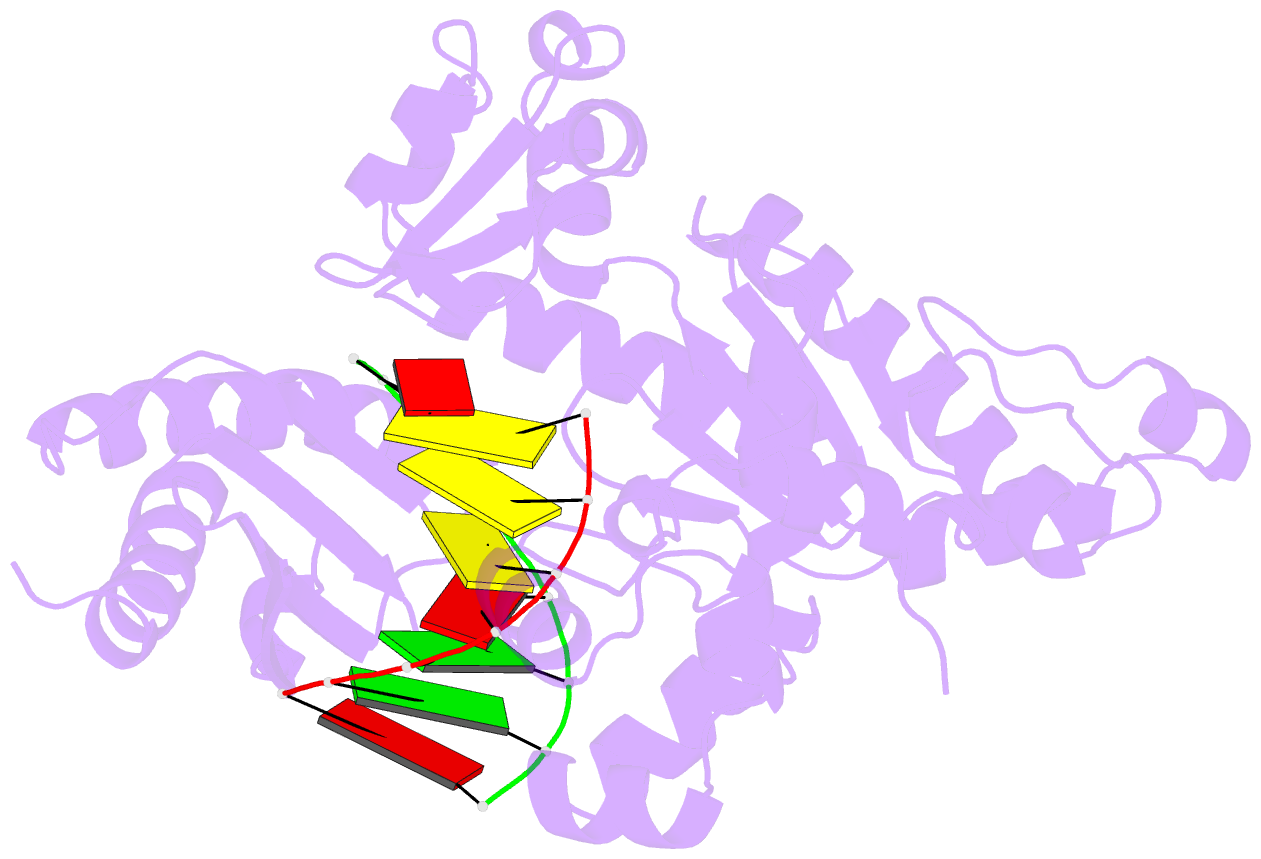Summary information and primary citation
- PDB-id
- 5ulx; SNAP-derived features in text and JSON formats;
DNAproDB
- Class
- thansferase-DNA
- Method
- X-ray (1.96 Å)
- Summary
- Structure of human DNA polymerase iota bound to template 1-methyl-deoxyadenosine crystallized in the presence of dctp
- Reference
- Jain R, Choudhury JR, Buku A, Johnson RE, Prakash L, Prakash S, Aggarwal AK (2017): "Mechanism of error-free DNA synthesis across N1-methyl-deoxyadenosine by human DNA polymerase-iota." Sci Rep, 7, 43904. doi: 10.1038/srep43904.
- Abstract
- N1-methyl-deoxyadenosine (1-MeA) is formed by methylation of deoxyadenosine at the N1 atom. 1-MeA presents a block to replicative DNA polymerases due to its inability to participate in Watson-Crick (W-C) base pairing. Here we determine how human DNA polymerase-ι (Polι) promotes error-free replication across 1-MeA. Steady state kinetic analyses indicate that Polι is ~100 fold more efficient in incorporating the correct nucleotide T versus the incorrect nucleotide C opposite 1-MeA. To understand the basis of this selectivity, we determined ternary structures of Polι bound to template 1-MeA and incoming dTTP or dCTP. In both structures, template 1-MeA rotates to the syn conformation but pairs differently with dTTP versus dCTP. Thus, whereas dTTP partakes in stable Hoogsteen base pairing with 1-MeA, dCTP fails to gain a "foothold" and is largely disordered. Together, our kinetic and structural studies show how Polι maintains discrimination between correct and incorrect incoming nucleotide opposite 1-MeA in preserving genome integrity.





